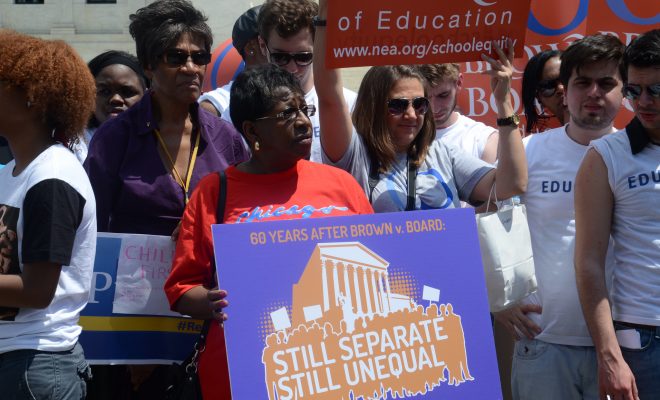
By Erica Frankenburg, for The Conversation
Democratic presidential candidate Kamala Harris, a senator from California, has spoken about how she benefited from attending Berkeley’s desegregated schools.
“There was a little girl in California who was part of the second class to integrate her public schools and she was bused to school every day. And that little girl was me,” Harris said in the first Democratic debate to candidate Joe Biden. “So I will tell you that on this subject, it cannot be an intellectual debate among Democrats. We have to take it seriously. We have to act swiftly.”
School segregation is the separation of students into different schools by race. In 1954, the Supreme Court declared segregation was unconstitutional. Desegregation efforts since then have used a variety of tools to try to overcome patterns of segregation that persist.
Studies have shown that school desegregation has important benefits for students of all races. Recent research illustrates that its positive impact on the educational attainment, lifetime earnings and health of African American families persists for multiple generations.
Yet, despite years of government desegregation efforts and the proven benefits of integrated schools, our recently published research shows that U.S. school segregation is higher than it has been in decades, even if there are no longer overt laws requiring racially segregated schools.
Racial makeup of public schools
In the civil rights era, nearly 80% of public school students were white, and African American students were the largest group among students of color.
I have been studying school segregation and desegregation for more than a decade and also assist communities in addressing segregation.
In the last school year for which my group had data, 2016 to 2017, the U.S. public schools no longer had a majority of any racial group.
Despite an increase in the number of public school students since the late 1960s, there are almost 11 million fewer white children in public schools nearly 50 years later. However, white students are still the largest group of students at 48%.
Latino students continue to increase nationally and in every region of the country. There are also 1 million more black students since the civil rights era, or approximately 15% of students. In some states, Asian students are increasing. Multiracial students – a group not even part of the official federal classification until 2008 – are also nearly 4%.
Click here to read more.